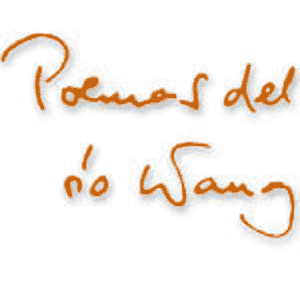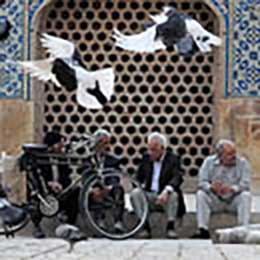

 Eastern Anatolia, the valley of Karasu (Black Water), the upper stream of Euphrates, near Nimrud Dağ (Nimrod Mountain), once seat of the Hittite empire, from the train at dawn
Eastern Anatolia, the valley of Karasu (Black Water), the upper stream of Euphrates, near Nimrud Dağ (Nimrod Mountain), once seat of the Hittite empire, from the train at dawn 

This road, however, was built up only from the 1950s onwards. Before that, only courageous caravans started up the winding mountain paths, often risking the attack of Kurdish bandits, like Ármin Vámbéry who in 1861 crossed these mountains from Trebizond to Tabriz in the company of Armenian merchants, disguised as a poor dervish.
Thirty years later, in 1889 Sándor Kégl opted for the only route passable for gentlemen travelers. He went by boat from Constantinople to Trebizond, and from there by train through Tiflis to Baku where he had to wait a week for the Russian post steamer sailing through the Caspian Sea to Persia. The waiting did not pass in vain. The most beautiful thing in a journey, for which no guidebook can make up, is to make new acquaintances. Sándor Kégl also found friends in Baku. As he wrote in the 14 September 1890 edition of Vasárnapi Ujság, in the third part of his Persian voyage:
Baku is already a more or less Eastern city. The majority of the population are Persians and Turks speaking the Azerbaijani dialect. I often saw prominent Turkish beys walking on the streets in lavish silk caftans.
 In the inn where I stayed, two Turkish beys reserved a room as well. Both of them wore the picturesque Turkish national suit. They had lunch at the same table where I did, so I very soon made acquaintance with them. They were brothers, one called Samid and the other Shahbaz, and they came to Baku for some lawsuit. When they got to know that I was Hungarian, they praised the Hungarians to heavens, and cursed the Russians who wanted to deprive them from their national identity. Besides their mother tongue, both of them spoke well in Persian and Russian. The younger one, Shahbaz had learned in a Russian elementary school, and could write well in Russian. I often went for a walk with them to the city. At the farewell, with an Oriental naivety [sic!] they vowed eternal friendship to me and promised that they would visit me in Hungary. The younger bey caught sight of a Russian book on my table, the “Journey around the World” by Goncharov, and he wrote on the frontispiece the following Russian line: “You’re my friend, I’m your friend, we’ll be good friends to the grave” (“Ты мой друг, я твой друг, друзья мы до гроба”).
In the inn where I stayed, two Turkish beys reserved a room as well. Both of them wore the picturesque Turkish national suit. They had lunch at the same table where I did, so I very soon made acquaintance with them. They were brothers, one called Samid and the other Shahbaz, and they came to Baku for some lawsuit. When they got to know that I was Hungarian, they praised the Hungarians to heavens, and cursed the Russians who wanted to deprive them from their national identity. Besides their mother tongue, both of them spoke well in Persian and Russian. The younger one, Shahbaz had learned in a Russian elementary school, and could write well in Russian. I often went for a walk with them to the city. At the farewell, with an Oriental naivety [sic!] they vowed eternal friendship to me and promised that they would visit me in Hungary. The younger bey caught sight of a Russian book on my table, the “Journey around the World” by Goncharov, and he wrote on the frontispiece the following Russian line: “You’re my friend, I’m your friend, we’ll be good friends to the grave” (“Ты мой друг, я твой друг, друзья мы до гроба”).
 In the inn where I stayed, two Turkish beys reserved a room as well. Both of them wore the picturesque Turkish national suit. They had lunch at the same table where I did, so I very soon made acquaintance with them. They were brothers, one called Samid and the other Shahbaz, and they came to Baku for some lawsuit. When they got to know that I was Hungarian, they praised the Hungarians to heavens, and cursed the Russians who wanted to deprive them from their national identity. Besides their mother tongue, both of them spoke well in Persian and Russian. The younger one, Shahbaz had learned in a Russian elementary school, and could write well in Russian. I often went for a walk with them to the city. At the farewell, with an Oriental naivety [sic!] they vowed eternal friendship to me and promised that they would visit me in Hungary. The younger bey caught sight of a Russian book on my table, the “Journey around the World” by Goncharov, and he wrote on the frontispiece the following Russian line: “You’re my friend, I’m your friend, we’ll be good friends to the grave” (“Ты мой друг, я твой друг, друзья мы до гроба”).
In the inn where I stayed, two Turkish beys reserved a room as well. Both of them wore the picturesque Turkish national suit. They had lunch at the same table where I did, so I very soon made acquaintance with them. They were brothers, one called Samid and the other Shahbaz, and they came to Baku for some lawsuit. When they got to know that I was Hungarian, they praised the Hungarians to heavens, and cursed the Russians who wanted to deprive them from their national identity. Besides their mother tongue, both of them spoke well in Persian and Russian. The younger one, Shahbaz had learned in a Russian elementary school, and could write well in Russian. I often went for a walk with them to the city. At the farewell, with an Oriental naivety [sic!] they vowed eternal friendship to me and promised that they would visit me in Hungary. The younger bey caught sight of a Russian book on my table, the “Journey around the World” by Goncharov, and he wrote on the frontispiece the following Russian line: “You’re my friend, I’m your friend, we’ll be good friends to the grave” (“Ты мой друг, я твой друг, друзья мы до гроба”). Grigory Gagarin (1810-1893): Azeri costumes. Middle: Bey from Karabagh. Right and left: Young gentlemen from Shamakhi. Click to enlarge. Thanks to Araz for the illustrations!
Grigory Gagarin (1810-1893): Azeri costumes. Middle: Bey from Karabagh. Right and left: Young gentlemen from Shamakhi. Click to enlarge. Thanks to Araz for the illustrations!The study of E. V. Klishina “Poems in albums in early and late 20th century” points it out that this verse was a favorite note for albums at that time, which of course does not detract anything from the warmth and personal dedication of the gesture. During the preparation of the web edition of Ferenc Pápai Páriz’s album amicorum we could learn that once even the most intimate friends considered such formulas as the most appropriate way for the solemn expression of their closeness. Neither decreases its value the fact that in Russian albums this verse usually rhymed with a second one: “You’re a fool, I’m a fool, we’re both fools” which probably also served to highlight the informal and intimate character of a friendship:
Ты друг, я друг –
Друзья мы до гроба.
Ты дурак, я дурак –
Дураки мы оба.
Друзья мы до гроба.
Ты дурак, я дурак –
Дураки мы оба.
Ivan Goncharov (1812-1891), however, never traveled around the world, and so he did not write any book entitled “Journey around the World”. Kégl most certainly referred with this title to the book Фрегат Паллада – “The Frigate Pallas” for the Hungarian public not versed in contemporary Russian literature. Goncharov, whose name is today best known for his Oblomov, one of the best 19th-century Russian novels and Mikhalkov’s beautiful film based on it, between 1852 and 1855 participated as Admiral Putatin’s secretary in a glorious adventure of Russian imperialism, the “opening up” of Japan and the enforcement of the Russo-Japanese trade relations. Goncharov’s description of this voyage, published in 1858 was a great success. Its 1886 Russian edition in two volumes can be found here and here.
 Route of the frigate Pallas from the Northern Sea through Britain and Afrika to Japan. Below: The image of the frigate by A. P. Bogolyubov, and its modern Russian copy, the school frigate bearing its name.
Route of the frigate Pallas from the Northern Sea through Britain and Afrika to Japan. Below: The image of the frigate by A. P. Bogolyubov, and its modern Russian copy, the school frigate bearing its name.

I also wanted to see the dedication of Shahbaz bey in the library of Sándor Kégl, but I could not find the book. It was not even included in the 1926 inventory of the Academy Library including a note on each book of the freshly received Kégl library.

Although the Academy Library has a number of original editions of the book, none of them is Kégl’s copy with the dedication. I do not know what happened to it. Since the last edition of the book was published in 1889, when Kégl crossed the Caucasian corner of the Russian empire on his way to Persia, it is possible that he bought the new edition in Tiflis and he was just reading it in Baku, that’s why it was lying on his desk. However, when he set out for home, and – I unfortunately know this situation too well – he had to make a cruel selection among the many books purchased in Tehran, he perhaps omitted this one. He did not do it well. I would have not left there a dedication like this for sure. And I hope that in one of Tehran’s many small second-hand bookshops where the weirdest books pop up, there is still lurking The frigate Pallas by Goncharov with the dedication of Shahbaz bey, like the well of the Little Prince in the desert, and one day it will come to the hand of someone who really deserves it.
 “A Persian house in Baku.” Samuel G. W. Benjamin: Persia and the Persians, London, 1887, 17. From the library of Sándor Kégl. As Araz points it out, this is in the reality the entrance
“A Persian house in Baku.” Samuel G. W. Benjamin: Persia and the Persians, London, 1887, 17. From the library of Sándor Kégl. As Araz points it out, this is in the reality the entrance of the Khan’s Palace in Baku. See the drawing by Grigory Gagarin
This point would be quite suitable to round off this post. However, one thing still calls for an explanation. Where did two provincial beys in late 19th-century Azerbaijan have so good information on the Hungarians as the friends of the Turks and enemies of the Russians from?
 Sultan Abdul Hamid II in 1867… |
 …and in 1918. |
The leader of the eight-members delegation was Béla Tóth, a later popular journalist and famous author of the six-volumes collection of Hungarian historical anecdotes, who in his last book Gül Baba, published shortly before his death in 1907 recalled this enterprise of his student years like this:
Perhaps you have not yet entirely forgotten those beautiful days when we Hungarians came so much into commotion for our Turkish brothers that we brought a sword to sneaky old Abdul Kerim and we cheered even the red-trousered pasha smoking on the sign-boards of tobacco-shops just because of being a Turk. Time is quickly passing. Nowadays this youthful enthusiasm is largely over. In all Hungary I only know one person in whom it is invariably living. That person is me. I can’t help it, I love the Turks so much. Whenever in the English journals I see a a cartoon with turban headed Turks, or whenever in the railway guide I turn on the page with the timetable of the trains going to the East, my heart throbbes like when someone in love hears the name of his lover. Whenever I want to be a little bit happy, I rush down to Constantinople or to Cairo, and I daydream and relax there among the pious Muslims. I have learned their language, I have assimilated to their habits, my philosophy of life tends to theirs. I am an Eastern person here in the West; the eternal nostalgia for the Oriens lives in my heart. And when this fool, infantile feeling is already very painful, I go up to  the grave of Gül Baba, when nobody knows it and nobody sees it, and at the dilapidated little türbe I am under the illusion of being in the East.
the grave of Gül Baba, when nobody knows it and nobody sees it, and at the dilapidated little türbe I am under the illusion of being in the East.
 the grave of Gül Baba, when nobody knows it and nobody sees it, and at the dilapidated little türbe I am under the illusion of being in the East.
the grave of Gül Baba, when nobody knows it and nobody sees it, and at the dilapidated little türbe I am under the illusion of being in the East.No matter where Sándor Kégl put the book of Goncharov, this writing by Béla Tóth is a worthy response to the dedication of Shahbaz bey.



























































































Add comment